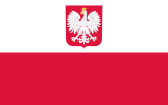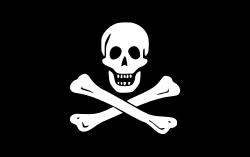The Krolowa's equipment includes the following:
1 inflatable 6-man life raft, plus numerous flotation and rescue devices such as life preservers and life jackets.
1 CO3 [sic] fire extinguisher, plus buckets for sand or water at strategic locations throughout the tug.
A well stocked "sick-bay" in the galley, plus first-aid kits throughout the tug. The sick bay is the equivalent of a Doctor's medical kit; the first aid kits are Personal Medical Kits.
A 60 kilowatt generator permanently installed below decks and a 60-kilowatt portable generator kept in the machine shop on the main deck (to supply it with power).
A white light spotlight mounted above the bridge.
2 pairs of 4x binoculars.
*One battery powered portable laser range finder.
150 meters of heavy-duty steel cable for hauling and securing the barge.
200 meters of hemp cable and hawsers for docking and anchoring.
300 meters of light line of all sizes and weights.
2 Soviet-made DShK machineguns mounted on the companionway on either side of the bridge, and [see
Weapon's Locker] rounds of ammo.
1 Very pistol, and an assortment of hand-held and pistol flares, signal rockets, and line-carrying rockets.
An extensive set of mechanic's and engineering tools for use on the engines and for repair work throughout the boat. These are equivalent to a Basic Tool Kit, Power Hand Tools and Electrical Repair tools combined, and an Arc Welder. The Machine Shop on board is the equivalent of a Portable Machine Shop, but without the trailer.
The galley includes a large refrigerator and small freezer, and a galley stove which is the equivalent of a military field cooker. Crude but efficient water purification equipment has been fabricated and installed as well.
The storeroom includes a small ethanol still. A section of the storeroom has been converted into a shower. There is even a bathtub, taken from an abandoned building, which the crew uses for laundry as well as bathing.
1 Krakow Flag
 1 Polish Flag
1 Polish Flag
 1 Warsaw Flag
1 Warsaw Flag
 1 Black (Pirate) Flag
1 Black (Pirate) Flag
 1 Soviet Union Flag
1 Soviet Union Flag

-
This message was last edited by the GM at 03:42, Thu 04 June 2015.













